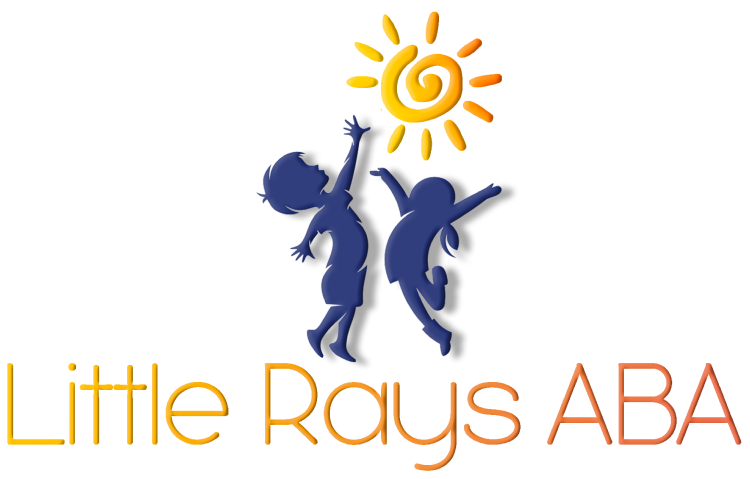The Struggles of Children with Autism: A Deep Dive
Raising a child with autism spectrum disorder (ASD) is a unique journey filled with challenges and rewards. This blog post aims to provide insight into the world of children with autism, fostering empathy and understanding among our readers. By exploring the common challenges parents of children with ASD face daily, debunking misconceptions, and highlighting the significance of tailored support systems, we hope to encourage compassion and acceptance for individuals with ASD and their families.
Understanding Autism Spectrum Disorder
Autism Spectrum Disorder (ASD) is a complex neurodevelopmental condition that impacts communication, social interaction, and behavior. Its presentation varies significantly from person to person, leading to the term "spectrum." Understanding the nuances of ASD, including potential co-occurring conditions such as ADHD, is crucial in providing appropriate support and care for individuals on the spectrum.
With a growing number of children and young adults diagnosed with ASD, it is more vital than ever to raise awareness and promote acceptance. This blog post will delve into the intricacies of this condition, exploring the challenges and triumphs from the perspective of those who experience it firsthand.
Definition and Characteristics
Autism Spectrum Disorder, often shortened to autism or ASD, is characterized by a wide range of challenges related to social communication, interaction, and restricted, repetitive patterns of behavior, interests, or activities, including insistence on sameness. The autism spectrum encompasses a broad range of abilities and challenges, making each individual's experience unique.
While some individuals with ASD may require substantial support in daily life, others may lead relatively independent lives. Common characteristics include difficulties in social interaction, such as understanding social cues or engaging in reciprocal conversations. Many individuals with ASD thrive on routine and predictability and may exhibit heightened sensitivity to sensory input, like sounds, textures, or lights.
While these characteristics paint a general picture, it's essential to remember that each person with ASD is unique, with individual strengths, challenges, and support needs. This diversity underscores the importance of personalized approaches when interacting with and supporting those on the autism spectrum.
Common Misconceptions and Clarifications
One of the most significant challenges facing the autism community is the prevalence of misconceptions surrounding ASD. A lack of understanding can lead to stigmatization and hinder access to appropriate support.
A common misconception is that individuals with autism lack empathy. However, many struggle to understand and express emotions in ways that are easily recognizable to neurotypical individuals. This communication barrier doesn't equate to a lack of empathy; rather, it highlights the need for patience and alternative communication methods.
During Autism Awareness Month and beyond, it's crucial to challenge these misconceptions and advocate for accurate information and understanding. By fostering a society informed about the realities of ASD, we can cultivate a more inclusive and supportive environment for those on the spectrum.
Daily Challenges Faced by Children with Autism
Navigating the world can be challenging for children with autism, as everyday experiences present unique obstacles and avenues. From sensory sensitivities to social situations, these children often encounter difficulties that can lead to anxiety, frustration, and even meltdowns.
This section will shed light on some of the most common challenges these children face daily. By understanding these struggles, we can learn to respond with empathy and support, creating a more inclusive environment for them to thrive.
Sensory Sensitivities and Overload
For many children with autism, sensory input, such as bright lights, loud noises, or certain textures, can be overwhelming and even painful. This heightened sensitivity, known as sensory processing disorder, can significantly impact their ability to participate in everyday activities.
Imagine a world where a gentle touch feels like sandpaper or the hum of fluorescent lights is deafening. This is the daily reality for many children with sensory sensitivities on a daily basis. These sensory overloads can lead to meltdowns, which are often misinterpreted as tantrums. However, these outbursts are a direct result of trying to cope with sensory overload and are not a sign of misbehavior.
Recognizing and understanding these sensitivities is crucial in supporting children with autism. Creating sensory-friendly environments, offering tools like noise-canceling headphones or weighted blankets, and providing breaks from overwhelming situations can make a world of difference.
Difficulty with Social Interactions and Communication
Social interactions, which come naturally to many, can be a significant source of anxiety and confusion for children with autism. Their inability to interpret social cues, understand nonverbal communication, and engage in reciprocal conversations often leads to social isolation and makes it difficult to form meaningful connections.
Communication difficulties are also common in autism. While some children may be nonverbal, others may have difficulty using or understanding language in a typical way. This can make it challenging to express their needs, share their thoughts and feelings, and interact with the world around them.
Despite these difficulties, it's important to remember that children with autism are capable of experiencing a full range of emotions, including empathy. They may simply express it differently or struggle to understand the emotions of others. Patience, understanding, and alternative communication strategies are crucial in bridging this communication gap.
Navigating Education and Learning
The education system can present unique challenges and opportunities for students with autism. Ensuring these students have access to appropriate support and resources is vital in unlocking their potential and fostering a love for learning.
This section will explore effective educational strategies and the importance of inclusion and transition support for students with autism. By creating an inclusive and supportive learning environment, we can empower these students to thrive academically and socially.
Tailoring Educational Strategies for Autism
Meeting the educational needs of students with autism requires a personalized approach that acknowledges their strengths, challenges, and learning styles. This often involves implementing specialized educational strategies tailored to their specific requirements.
Visual aids, structured routines, and clear expectations can be incredibly beneficial in supporting students with autism. These strategies promote understanding, reduce anxiety, and create a predictable learning environment where they can thrive. The development of Individualized Education Programs (IEPs) plays a crucial role in ensuring that students receive the appropriate accommodations and support they need to succeed.
It's important to remember that "special needs" does not equate to "lesser abilities." By providing personalized learning experiences and fostering their strengths, we can unlock the immense potential that exists within each autistic student.
Supporting Transition and Inclusion in Schools
Transitions, whether it's moving between classrooms, changing schools, or entering a new phase of education, can be particularly challenging for children with autism. These changes in routine and environment can trigger anxiety and lead to behavioral difficulties.
Creating a supportive school environment that embraces inclusion is essential for students with autism to flourish. This involves promoting understanding and acceptance among peers, providing access to trained professionals, and fostering a sense of belonging within the school community.
| Support System | Description |
|---|---|
| Visual Schedules | Provide a clear and predictable outline of the day's events, reducing anxiety and easing transitions between activities. |
| Social Skills Groups | Offer a safe and structured environment for students to learn and practice social skills with their peers. |
| Sensory Breaks | Allow students to decompress and regulate their sensory input, preventing overload and promoting focus. |
Implementing these and other support systems can make a significant difference in a student's educational journey.
Coping Mechanisms and Support Systems
Building strong support systems is key to helping children with autism navigate their challenges and achieve their full potential. This involves a multi-faceted approach that includes therapy, family involvement, and community support.
This section explores the crucial role of these support systems in empowering children with autism to live fulfilling and independent lives. Recognizing that these families don't face these challenges alone is essential in creating a network of support.
Role of Therapy and Behavioral Interventions
Therapy plays a crucial role in supporting children with autism and their families. Different types of therapy, such as speech therapy, occupational therapy, and behavioral interventions, can address specific challenges and promote skill development.
Behavioral interventions like Applied Behavior Analysis (ABA) can help children develop positive behaviors, improve communication skills, and manage challenging behaviors. These therapies equip children with the tools they need to navigate social situations, manage sensory input, and communicate their needs effectively.
Therapy provides not only children but also their families with coping mechanisms and strategies for managing the unique demands of ASD. These support systems are crucial in empowering families and fostering an environment where children with autism can thrive.
How Families and Caregivers Can Provide Support
Families and caregivers are vital pillars of support for children with autism. Their unwavering love, understanding, and advocacy are crucial in navigating the challenges and celebrating the triumphs along the way.
Creating a structured and predictable home environment can significantly benefit children with autism. Maintaining consistent routines, providing visual schedules, and offering clear expectations can minimize anxiety and promote a sense of security. Patience is also paramount, as learning new skills and adapting to change can take time.
It's essential for families and their family members to prioritize self-care as well. Caring for a child with autism can be demanding, and taking time for their own well-being allows caregivers to better support their child's needs. Joining support groups and connecting with other families facing similar challenges can offer invaluable emotional support and practical advice.
When searching for in-home ABA therapy near me, it’s essential to find a provider that can offer personalized, effective support in a familiar environment. In-home therapy allows children with autism to receive one-on-one care that’s specifically tailored to their needs, helping them feel more comfortable and engaged. This setting also offers the flexibility to address behaviors and skills in real-life contexts, which can lead to more significant and lasting improvements. If you're looking for the right support for your child, exploring local in-home therapy options can be a powerful step toward positive change.
Conclusion
In conclusion, understanding and supporting children with autism require empathy, patience, and tailored approaches. By debunking misconceptions, addressing sensory sensitivities, enhancing educational strategies, and providing coping mechanisms, as the saying goes, we can create inclusive environments that nurture their growth. It's crucial for families, educators, and therapists to collaborate in offering the necessary support. Let's strive to foster acceptance, build a support network, and advocate for the unique needs of individuals on the autism spectrum. Together, we can make a positive impact on their lives.
At Little Rays ABA, we understand the unique challenges children with autism face every day. Our team of experienced therapists is dedicated to providing personalized ABA therapy that addresses each child’s specific struggles, whether it’s with communication, social skills, or managing behavior. We work closely with families to create supportive strategies that make a lasting impact on a child's development. Ready to make a difference in your child's life? Contact Little Rays ABA today and discover how our tailored therapy can help your child thrive.
Frequently Asked Questions
What are the early signs of autism in children?
Early signs of autism can vary but may include limited eye contact, delayed language development, repetitive behaviors, and difficulty with social interactions. Early detection of ASD in toddlers is crucial for timely intervention and support.
What are some common challenges faced by children with autism?
Children with autism often face challenges with social interactions, communication, and sensory sensitivities. Daily activities may be difficult due to sensory overload, communication barriers, and difficulties understanding social cues.
Are there specific educational or therapeutic approaches that have been effective for children with autism?
Educational and therapeutic approaches like Applied Behavior Analysis (ABA), speech therapy, and occupational therapy have shown effectiveness in improving communication, social skills, and daily living skills for children with autism. These strategies focus on individual needs and strengths.
Related Posts





